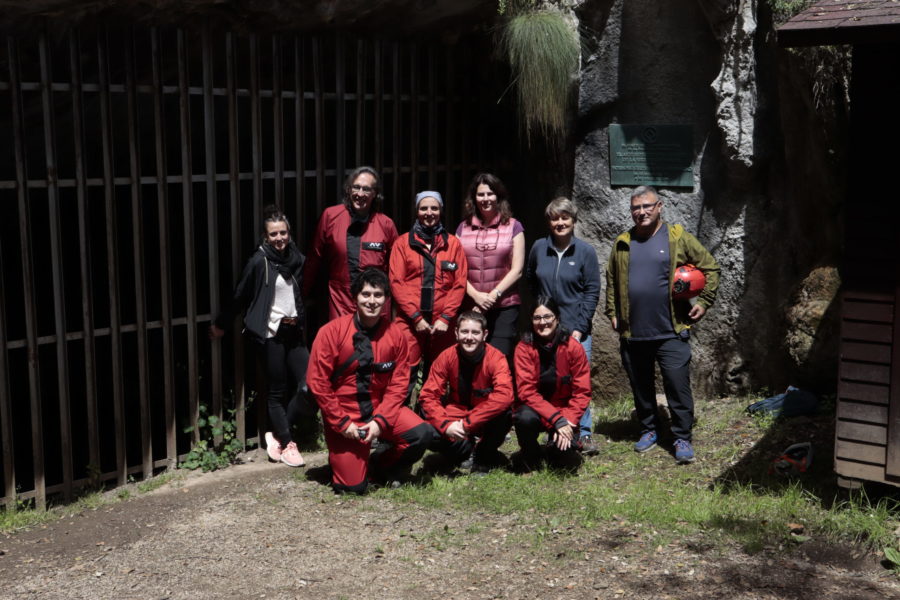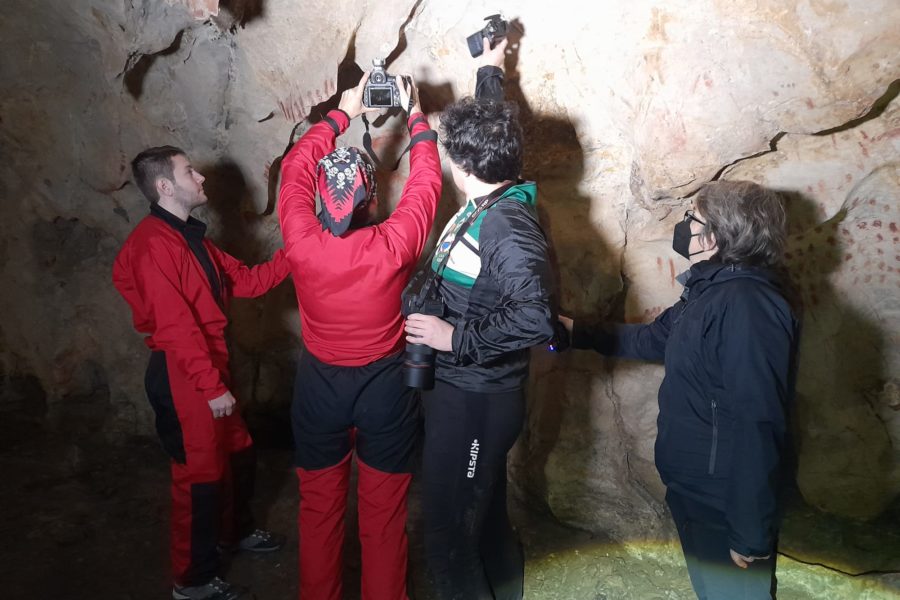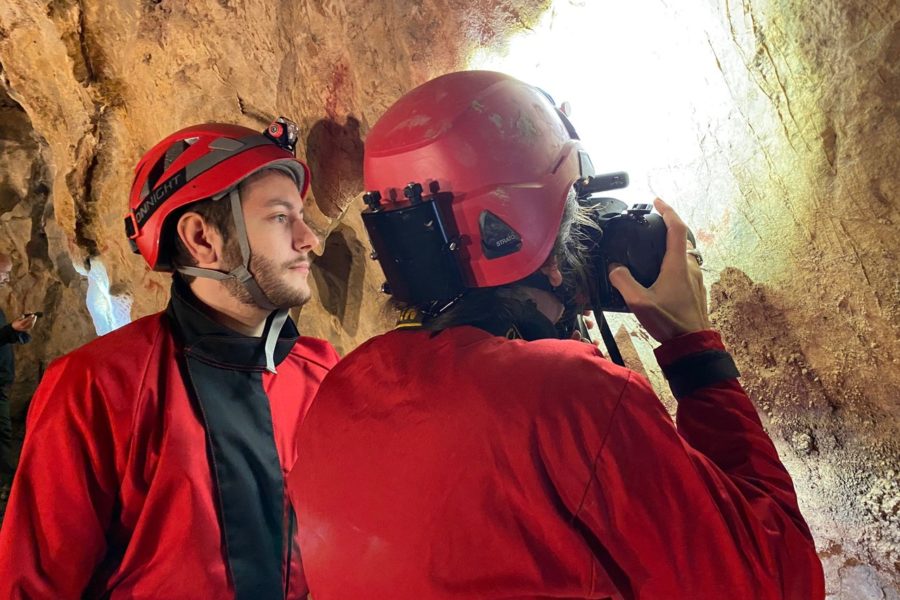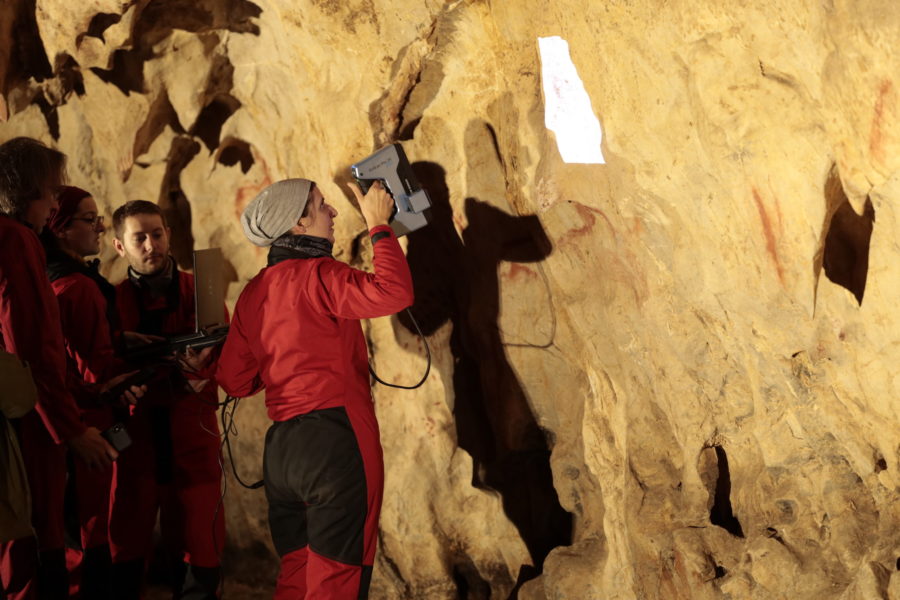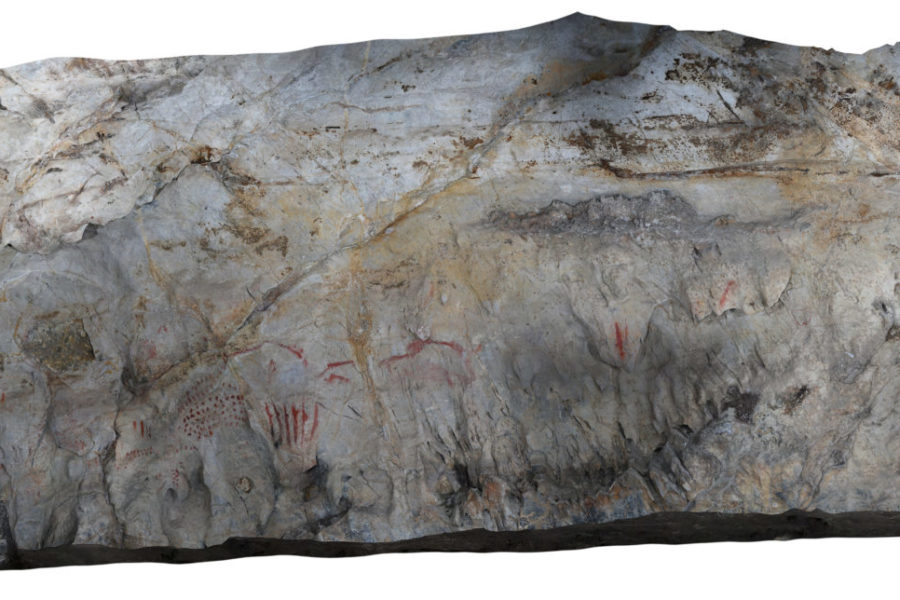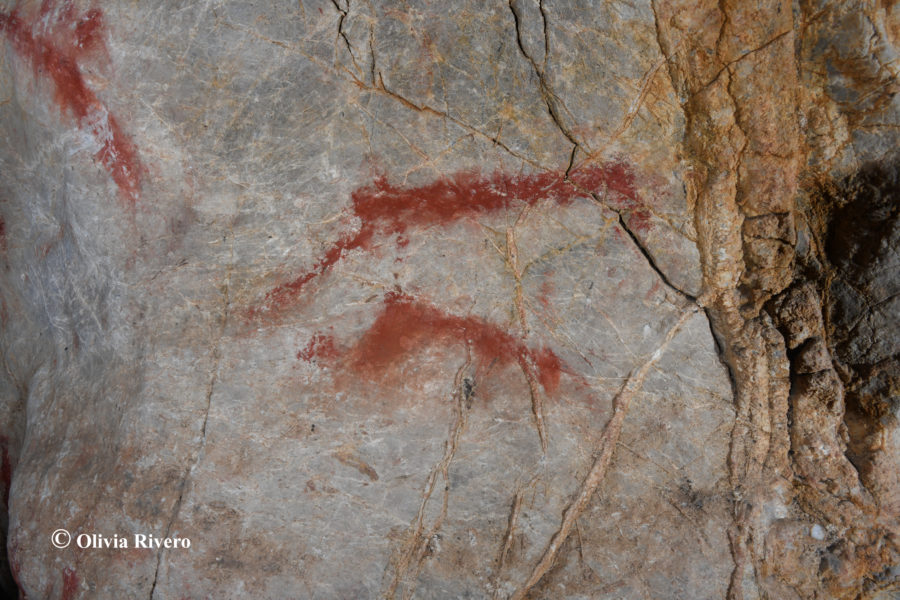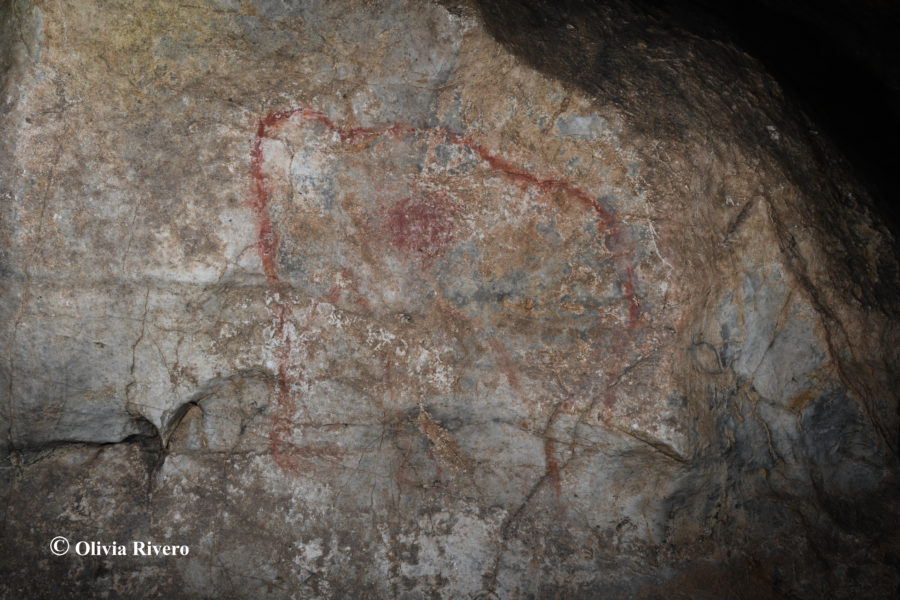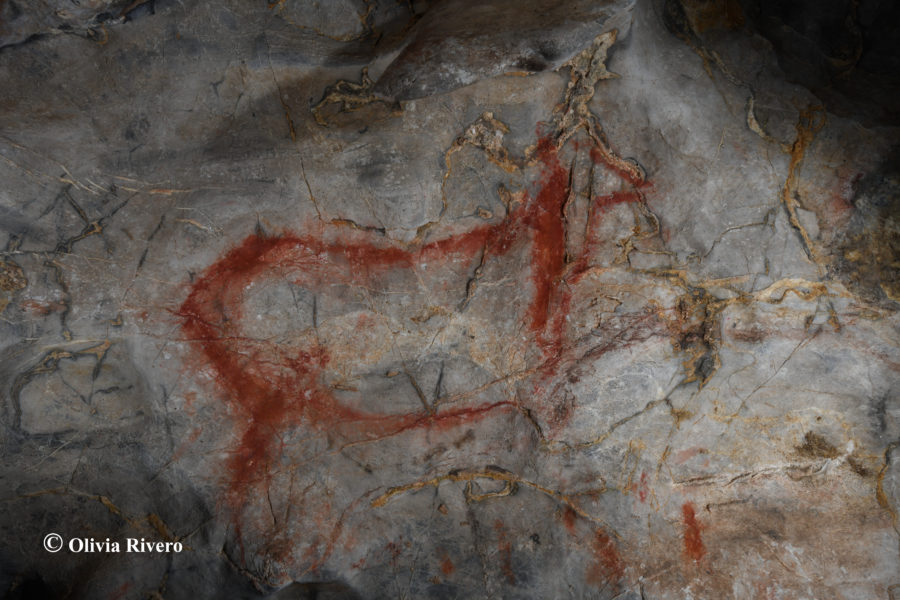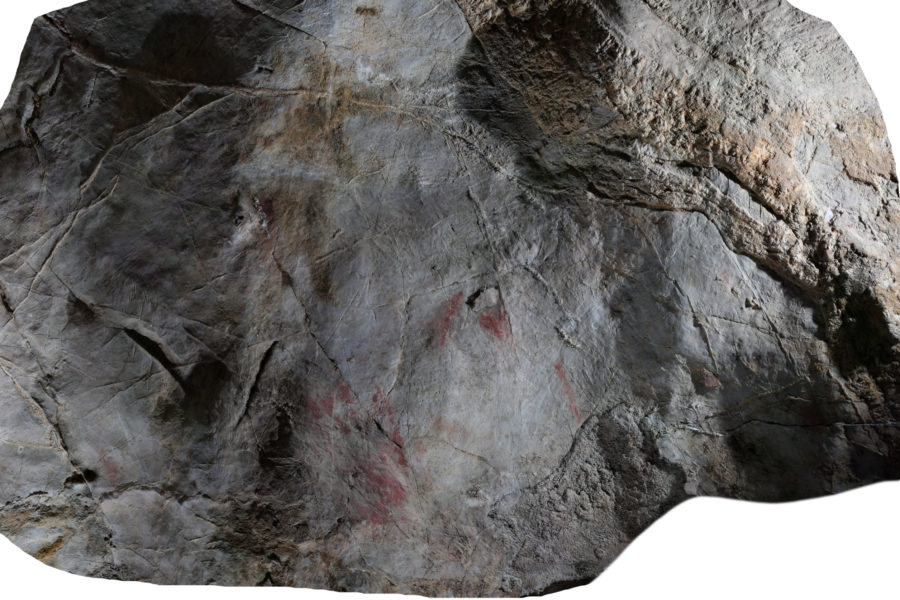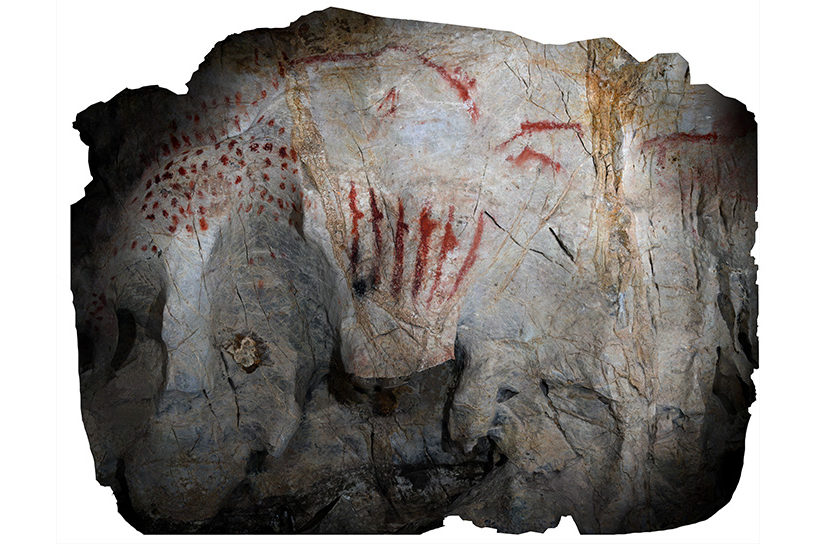El Pindal
Principal researcher: Olivia Rivero y María González-Pumariega Solís
The Pindal cave is located in the council of Ribadedeva, in the extreme east of Asturias, in an orographic enclave dominated by cliffs that lead to the Cantabrian Sea. It was discovered scientifically in 1908 by H. Alcalde del Río, although the study of its rock art was not published until 1911 in the work Les Cavernes de la Région Cantabrique, together with Breuil and Sierra. In the 20th century, work was carried out on the synthesis and revision of the art, with a small survey in the 1950s in which a small quantity of lithic pieces were recovered, such as quartzite flakes and an Asturian pickaxe. The latest review that has attempted to address the study of this cave is summarised in the research of M. González-Pumariega whose work La cueva de El Pindal. 1911-2011. Estudio de su arte rupestre cien años después de Les Cavernes de la Région Cantabrique (2011), is the most systematic and synthesising work to date.
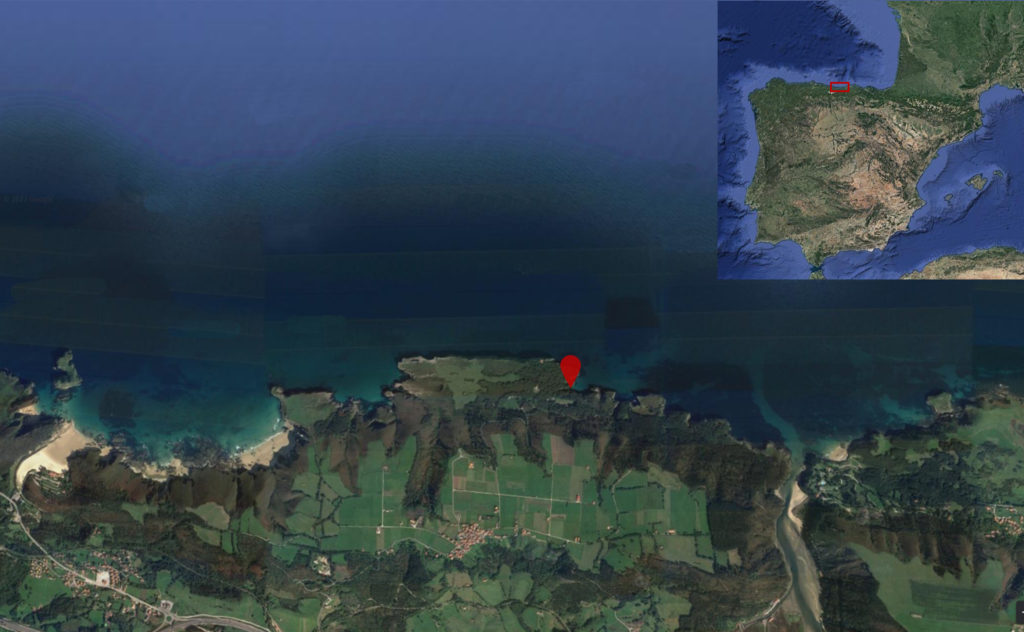
The aim of the project is to carry out a study of the parietal art of the El Pindal site, aimed at identifying the Palaeolithic engraved and painted motifs, as well as their restitution and analysis, using current methodologies, mainly near object photogrammetry, gigapixel photography, pigment analysis using non-invasive portable Raman and analysis of the internal archaeological context.

In 2021, a first campaign was carried out to study the art in this cavity, with the cataloguing and taking of photographs of various graphic units, archaeometric documentation and microscopic analysis of the motifs.
